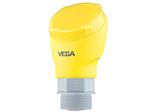Radar Monitoring | Environmental XPRT
Articles & Whitepapers
-
Oil Level Sensors: Monitoring Oil-Water Interface for Separation Efficiency
Overview In the extraction of petroleum (oil) by hydraulic fracturing, oil flows to the well emulsified with fracturing water. As part of the extraction operation, oil and water are separated at the well site. Separation also occurs at the refinery, where crude oil from the well site contains water that must be removed before refining. Separation vessels or separators are used for the process, ...
-
Case Study: Enhancing Flood Monitoring with Non-Contact Radar Level Sensors
Challenge Effective flood monitoring is essential for environmental agencies to safeguard communities and mitigate risks. Level sensors are a critical component of flood monitoring systems. An ...
News
-
Breaking new ground in water management technology, KISTERS introduces HyQuant.
A new approach from KISTERS combines water level and velocity measurement in a single compact sensor, overcoming cost barriers. This development streamlines integration and increases efficiency, offering significant benefits to water-dependent ...
Equipment & Solutions
-
Showcase
Compact Radar Sensor for Continuous Level Measurement
For simple measuring tasks, plastic housing IP66/IP67, Type 4X. Application area: 4 ... 20 mA output, measuring range up to 8 m, accuracy ±5 mm. VEGAPULS 11 is the ideal sensor for non-contact level measurement of liquids and bulk solids in simple applications. It is particularly suitable for use in water treatment, storage tanks with acids, lyes and additives in all industrial areas, or ...











